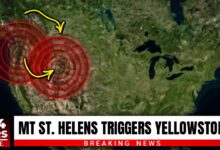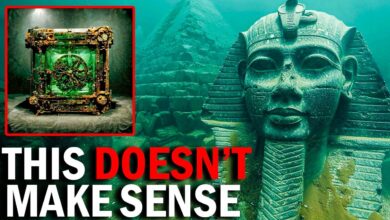This Is Crazy! A New Ocean Is Forming, Scientists FEAR the Earth’s Crust is Tearing Apart in Africa

A New Ocean is Forming in Africa: A Geological Transformation
Imagine witnessing the birth of a new ocean. Deep in Africa’s Afar region, the Earth is tearing apart, setting the stage for a transformation that could reshape continents and ecosystems.
This extraordinary phenomenon, driven by tectonic forces, offers clues to Earth’s ancient past and its evolving future. But what triggers such a monumental process? Let’s explore the Afar region—one of the planet’s most geologically active areas—to uncover the story.
In Ethiopia’s Afar Desert, the Dabbahu Volcano sits quietly in a region where tectonic plates are gradually moving apart. In 2005, after a long dormancy, the volcano erupted, demonstrating the immense forces beneath the Earth’s surface.
Before the eruption, warning signs emerged—ground swelling and over 130 earthquakes within days, raising alarm among locals. On September 26, 2005, the volcano erupted, releasing ash and rock, displacing over 6,000 people, and creating fissures up to 37 miles long and over three feet wide, exposing molten rock below. Scientists were left in awe as centuries of tectonic activity were compressed into mere days.
This event marked the start of an unprecedented transformation. The ground split dramatically, reshaping both the landscape and geological understanding. Experts, including the United States Geological Survey, described the speed and scale as unprecedented. Continuous tremors, described by locals as the Earth “groaning,” accompanied this transformation, offering scientists an extraordinary opportunity to study tectonic processes in real time.
The Afar Rift lies at the junction of three tectonic plates—the African, Arabian, and Somali plates. Over millions of years, these plates have been pulling apart at less than an inch per year. The 2005 eruption accelerated this separation, pushing the Somali Plate eastward.

Scientists predict that in about a million years, this movement will form a new island, encompassing parts of Ethiopia, Djibouti, and Somalia, eventually surrounded by a sea that could evolve into a full-fledged ocean.
As the Red Sea’s waters gradually flow into the rift, the Afar Desert will transform into a new coastline. While the changes may seem slow to human perception, they represent Earth’s incredible power of renewal. The Afar Rift has become a natural laboratory, offering scientists a unique chance to study ocean formation on dry land, without the challenges of deep-sea exploration.
This geological transformation hasn’t just captured the attention of scientists—it has also deeply impacted local communities. In the arid Afar Desert, water is scarce. After the eruption, locals developed innovative methods to collect water using steam from volcanic fissures.
However, the eruption also caused significant challenges, including the loss of livestock and damage to vegetation from volcanic gases. Despite these difficulties, the event has brought opportunities for scientific exploration and the potential for geothermal energy development.
Looking to Earth’s ancient history, similar processes have shaped the planet. For instance, the Mongol Aadt Ocean, which formed over 400 million years ago, began with land splitting and magma rising—processes akin to those in the Afar Rift. By studying these past events, scientists gain insights into future geological transformations.
Predictions suggest that in about 1 million years, the Afar Rift and Red Sea will merge, creating a new ocean. Over billions of years, however, Earth’s tectonic activity will eventually slow and cease as the mantle cools.
Without tectonic movement, processes like mountain building, earthquakes, and the carbon cycle will halt, leaving Earth’s surface static—resembling Mars or Venus. For now, though, Earth remains vibrant and dynamic, shaped by forces that connect us to its ancient past and ever-changing future.
The story of the Afar Rift reminds us of Earth’s relentless power to create and transform. From the birth of new oceans to the rise of future mountain ranges, the planet’s geological journey continues to shape its landscape, climate, and ecosystems.








